Table of Contents
There’s been plenty of rumors out there about a Ryzen based Razer Blade portable laptop, thanks to a reliable source that has been privy to many previous leaks. So it came as little surprise to me to see that the rumors were actually true: Razer has finally made a Ryzen based Razer Blade.
Update: Here’s our detailed review of the 2021 Razer Blade 14.
But what was a true shocker was that they managed to cram a full-power Ryzen 9 5900HX processor and anything bigger than a 3060 in a 14-inch product. In fact, they actually have a model with a 3080 GPU that runs at up to 100W!
This will, by far, be the smallest laptop to carry this kind of graphics, and on top of that, Razer joins the Ryzen club with potentially better battery life and CPU performance than their previous Intel-exclusive notebooks. The pairing of a Ryzen 9 5900HX with a RTX 3070/3080 is about as good of an entrance as you can make, too.
I do reserve some doubts as to how they are managing to keep these components cool in such a thin chassis. It’s actually a safe assumption that there are going to be some power limits on both the CPU and GPU in order to keep thermals in check.
Razer did mention that they are utilizing a next-generation vapor chamber cooling system to cool these components in the Blade 14. Considering the many years that Razer has been utilizing vapor chamber cooling, I think they probably have a handle on it.
| 2021 Razer Blade 14 | |
| Screen | 14 inch, 1920 x 1080 px, IPS equivalent, 144 Hz, matte, 100% sRGB, with FreeSync or 2560 x 11440 px, IPS equivalent, 165 Hz, matte, 100% DCI-P3, with FreeSync |
| Processor | AMD Ryzen 9 5900HX, 8C/16T, 3.3 Ghz base, up to 4.6 GHz Boost |
| Video | AMD Vega + up to Nvidia RTX 3080 Laptop 80-100W, with Dyn Boost 2.0 |
| Memory | 16 GB DDR4-3200 (soldered) |
| Storage | 512 GB /1 TB M.2 NVMe drives (single M.2 2280 slot) |
| Connectivity | Intel Wireless-AX 201 Wifi 6, Bluetooth 5.2 |
| Ports | 2x USB-A 3.2 gen2, 2x USB-C gen2 with data, DP, and power, HDMI 2.1, headphone/mic, lock |
| Battery | 61.6 Wh, 230 W USB-C charger |
| Size | 320 mm or 12.59” (w) x 220 mm or 8.66” (d) x 16.8 mm or .66” (h) |
| Weight | 1.8kg (3.92 lbs) + charger |
| Extras | per-key Chroma RGB keyboard, large clickpad, front speakers, HD camera + IR |
The GPU TGP is reportedly up to 100W, which is on par with what the Razer Blade 15 is set at. But “up to” doesn’t necessarily mean it will stay there – it could very well sit at 80W under constant load. Even so, a 3070/3080 at around 80W is still faster than anything else out there at this weight class. We’ll soon find out when we get a review unit in to test.
Update: Here’s our detailed review of the 2021 Razer Blade 14.
There are three GPU options to choose from: RTX 3060, 3070 & 3080. The 3060 model is only available with a 144Hz FHD screen, but the other models are paired with a 165Hz QHD screen with 100% DCI-P3(yay!).
At the same time, all models are locked into 16GB of soldered RAM, due to space concerns. Bummer, 32 GB options would have been nice. The SSD is 1 TB and is upgradeable, so no worries there. Only a single SSD slot, though, not two.
The keyboard is likely going to be the same as what’s on the Razer Blade Stealth 13, and is chroma RGB enabled too. The trackpad looks to be the same as well, which is great because that trackpad is perfect. Check out my latest Stealth 13 review for more details.
As for the size, we’re looking at a laptop that’s only .66” thick and weighs just under 4 lbs. On paper, it’s a tiny bit heavier than the 2021 Asus Zephyrus G14, but it’s 17% smaller in overall volume. Compared to the Blade 13 Stealth, it’s only 1 mm thicker and a little over half a pound heavier.
Either way, you look at it, this Blade 14 is small.
Other notable mentions are the inclusion of up-firing speakers, a Windows Hello webcam, and a 61.6Whr battery. The battery is small, but this is nonetheless a small device. The CPU being Ryzen base will likely help, even if it’s not an HS series.
Razer claims 12 hours of battery life, with a test protocol that is similar to what I do for “idle” testing. In that case, we can probably expect 4-5 hours of battery life for normal tasks and settings. We’ll see for sure on our test unit.
Pricing and availability
Prices start at $1799 for the 3060 model and go up to $2799 for the 3080 model. I think the real value is in the 3070 model at $2199 though, as it has the QHD screen and I doubt the 3070 and 3080 will have the performance difference to justify an extra $600.
The best part is this Blade 14 is on sale right now, at launch. Retailers such as Amazon, Microsoft, and Best Buy will have units on sale starting today. Also check out Razer’s webpage for all three models, if you want to buy it directly from them.
All in all, I’m really looking forward to getting a review unit in and putting it through the paces. I’m interested to hear if this is something of interest for you all too. Stay tuned for my full review.
Update: Here’s our detailed review of the 2021 Razer Blade 14.
Razer Blade 14 vs Asus ROG Zephyrus G14
Since Razer directly pitches this Blade 14 against the ROG Zephyrus G14, and I wanted to add my thoughts on this as well. BTW, this is Andrei writing this part of the article.
I just finished up testing the 2021 G14 and have it fresh in my mind. As you might know, that tops at a Ryzen 9 5900HS processor with RTX 3060 60-80W graphics and a QHD 120Hz screen with 100% DCI-P3, so the Blade 14 has some edges in terms of specs, with up to 100W GPU, a 165Hz QHD screen with similar colors, and Ryzen HX processors.
| 2021 Razer Blade 14 | 2021 Asus ROG Zephyrus G14 | |
| Screen | 14 inch, 1920 x 1080 px, IPS equivalent, 144 Hz, matte, 100% sRGB, with FreeSync or 2560 x 1440 px, IPS equivalent, 165 Hz, matte, 100% DCI-P3, with FreeSync |
14 inch, 1920 x 1080 px, IPS equivalent, 144 Hz, matte, 100% sRGB, with FreeSync or 2560 x 1440 px, IPS equivalent, 120 Hz, matte, 100% DCI-P3, with FreeSync |
| Processor | AMD Ryzen 9 5900HX, 8C/16T, 3.3 Ghz base, up to 4.6 GHz Boost | up to AMD Ryzen 9 5900HS 8C/16T, 3.o Ghz base, up to 4.6 GHz Boost |
| Video | AMD Vega + up to Nvidia RTX 3080 Laptop 80-100W, with Dyn Boost 2.0 | AMD Vega + up to Nvidia RTX 3060 Laptop 65-80W, with Dyn Boost 2.0 |
| Memory | 16 GB DDR4-3200 (soldered) | up to 48 GB DDR4-3200 (8/18 GB soldered + 1 DIMM) |
| Storage | 512 GB /1 TB M.2 NVMe drives (single M.2 2280 slot) | 512 GB /1 TB M.2 NVMe drives (single M.2 2280 slot) |
| Connectivity | Intel Wireless-AX 201 Wifi 6, Bluetooth 5.2 | Intel Wireless-AX 201 Wifi 6, Bluetooth 5.0 |
| Ports | 2x USB-A 3.2 gen2, 2x USB-C gen2 with data, DP, and power, HDMI 2.1, headphone/mic, lock | 2x USB-A 3.2 gen1, 1x USB-C gen2 with data, DP, and power, 1x USB-C gen1, HDMI 2.0b, headphone/mic, lock |
| Battery | 61.6 Wh, 230 W charger | 76 Wh, 180 W charger |
| Size | 320 mm or 12.59” (w) x 220 mm or 8.66” (d) x 16.8 mm or .66” (h) | 324 mm or 12.75” (w) x 222 mm or 8.74” (d) x 19.9 mm or .78” (h) |
| Weight | 1.8kg (3.92 lbs) + charger | from 1.6 kg (3.55 lbs) + charger |
| Extras | per-key Chroma RGB keyboard, glass clickpad, stereo front speakers, HD camera + IR | white keyboard, glass clickpad, quad speakers, finger sensor, no camera, optional Anime Matrix display on the lid |
Question is, can this deliver on the performance suggested by the HX CPUs and 100W GPUs? That’s something Derek will be able to test once he gets the review unit.
I find the fact that Razer bundles this model with a 230W charger somewhat reassuring. They also mentioned the vapor-chamber cooling module that supposed to keep everything in check in this compact chassis, something that worked well on past Blades products. Furthermore, the GPUs are advertised at up to 100W, so I’d expect they’re 80W with + 20W Dynamic Boost shifted away from the CPU, similar to the 15-inch Blade.
I also wanted to touch on the fact that Razer put up to 3080 GPUs in this product. We’ve actually tested the 80-100W 3070 and 3080 versions of these chips in the Zephyrus G15 series, which is a larger 15-inch chassis, and concluded there that the 3070 is the better value of the two, as the 3080 provides little improvements to justify paying the premium for. Which is significant here, at $600. So I would aim for the mid-level 3070 configuration, that’s the smarter choice imo.
Razer also went with a Ryzen 9 5900HX processor in this laptop and not the more efficient Ryzen HS bins, which look to still be an Asus exclusive for now. Shouldn’t matter much, though, the HX can be power-controlled and adjusted, and as Derek mentioned, I’d also expect some power limitations to be set in order to cope with the hardware inside this compact format, especially since Razer products tend to run quietly, and normally at lower power settings than their direct competition.
Specs aside, I’m glad to see that the Blade is a standard design, with the IO, inputs, fans, and radiators placed where they should be. I’m also happy to see up-firing speakers, a webcam with IR, and uncompromised inputs, although that’s one aspect where the Zephyrus G14 is very competitive as well.
However, I’ve never been a fan of the Ergolift form-factor that Asus implement on their G14 (and G15/M16, for that matter), which blows the hot air into the screen and squeezes all the ports on the front left edge, which makes me appreciate Razer’s traditional format even more. I also expect the build quality to be excellent on the Blade, much like with all their other products, and overall better than the Zephyrus. Hopefully, they also keep their QC in check.
The G14 and Blade 14 are otherwise about the same footprint, but the Blade is thinner and looks like the G14 is lighter. The extra space inside also allows Asus to include a larger battery, which paired with the Ryzen HS platform should give it an edge here. There are also quad-speakers on the G14 and I’d expect better audio quality, at least based on our past experience with the speakers in the Blade Stealth.
All in all, the G14 is now a 1.5 years old design, so Razer sure had their time to design what could be a better product in the 14-inch niche of performance notebooks. Even so, the Zephyrus remains a competitive product and looks like can still outmatch the Blade in some areas.
You will also have to pay a premium for this Blade 14, especially once you jump to the 3070 and 3080 configurations, so we’ll have to wait for the review to figure out the value in those options.
As mentioned already, the 3070 model at $2199 would be my go-to here, but I wouldn’t look past the 3060 base-variant either, which starts at $1799, so $300 on top of a similarly-specced Zephyrus G14. This base variant ships with an FHD 144 Hz screen with 100% sRGB colors, but that should be fine for most of you, and I’d expect the performance gap between the 3060 and the 3070 to be around 10-15%, based on our tests of these chips at 80-100W of power.
Either way, this Blade 14 has the potential to be one of the best performance ultraportables of the year, and I’m looking forward to our review for the full picture.

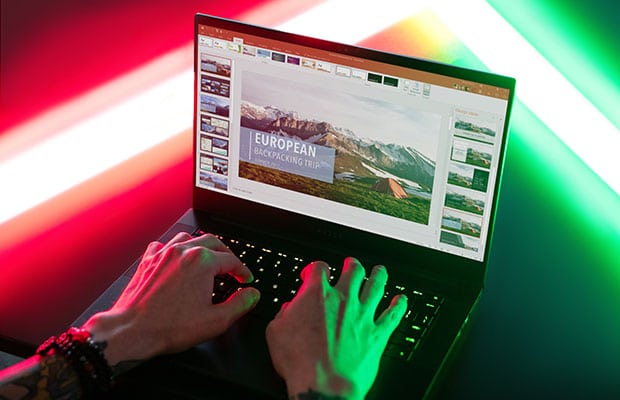
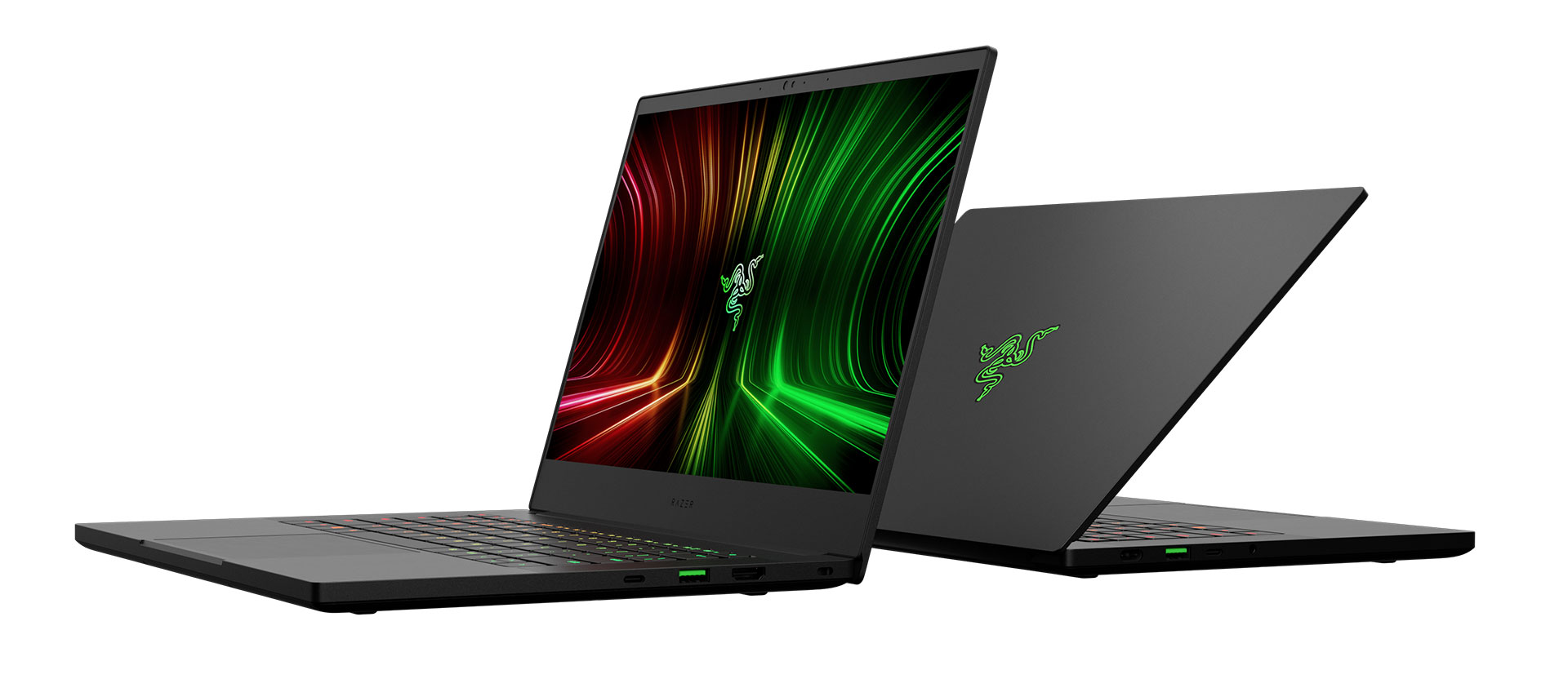
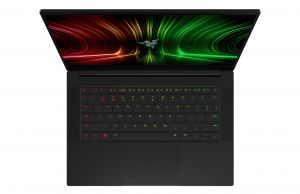
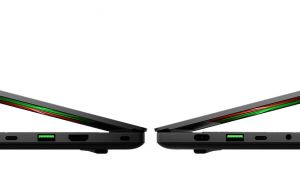
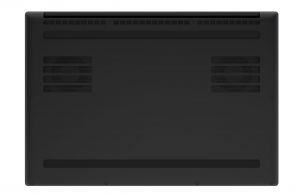

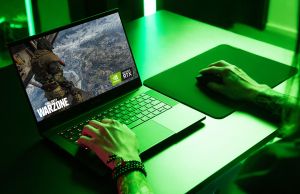





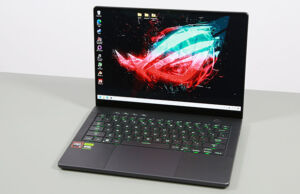
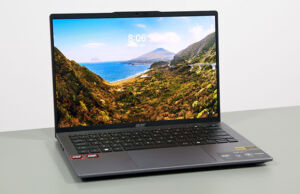
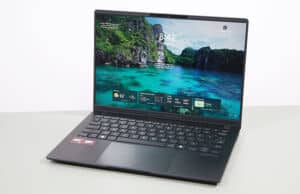


North_Set
June 15, 2021 at 3:39 am
damn the 3070 so expensive here in Canada, no way I'm buying that. However, I'm lost now on if I should buy the 3060 model of this, which seems like it may have a better cooling system or g15 3060 model which has a better screen. You guys gonna have to help me! Im be waiting for your guy's proper review on this laptop.
Bobby
June 15, 2021 at 4:04 am
I’m debating whether the 1440p panel is a better choice over the 1080p or not and am wondering if the longer battery life of the 1080p (how much time would you guess that to be) is worth it and if your really be able to tell the difference in pixel density between the two options on a 14” screen
Tov
June 23, 2021 at 11:17 am
At 1.8kg I would like to see this laptop compare to legion 7 slim. When talking about portability ,the first thing I look at is the weight though. With the same weight bigger screen and numpad are a plus for me too. Hope the slim give us 3070 choice when come out.
Tov
June 24, 2021 at 8:44 am
At 1.8kg I would like to see this laptop compare to 16" thinkpad Xtream gen4. When talking about potability, the first thing I Kim at is the weught though.
DW
June 25, 2021 at 8:02 am
The Asus ROG Zephyrus G14 can have up to 32GB. The Razer is limited to 16GB. I can't believe they nerfed all 14" blade models – it's 2021! Maybe they were concerned it would be too much competition for the Blade 15? Would have been nice to also see a 16:10 screen on this, like the new ASUS M16 and MSI models have. With 32GB option and a 16:10 screen, it would have been a slam dunk for Razer.
Derek Sullivan
June 25, 2021 at 3:31 pm
I'm with you there. 16:10 screen and a 32GB option would have been a slam dunk.
bittricks
July 12, 2021 at 7:22 am
I tested this laptop model out. The typing experience was good (very similar to that on the Dell XPS 15), but the screen resolution is such that print is too small to be practical. I know scaling can be changed, but that just means that application windows are enlarged and there's more on-screen work needed to be done moving app windows about.
16 GB RAM is not practical. Neither is the 14 inch screen. Using an IDE or virtual machines, the experience was a hassle.
Instead of sinking $2000 into this system I just went with a custom tower PC build. Got many multiples of the capabilities for only $1200.